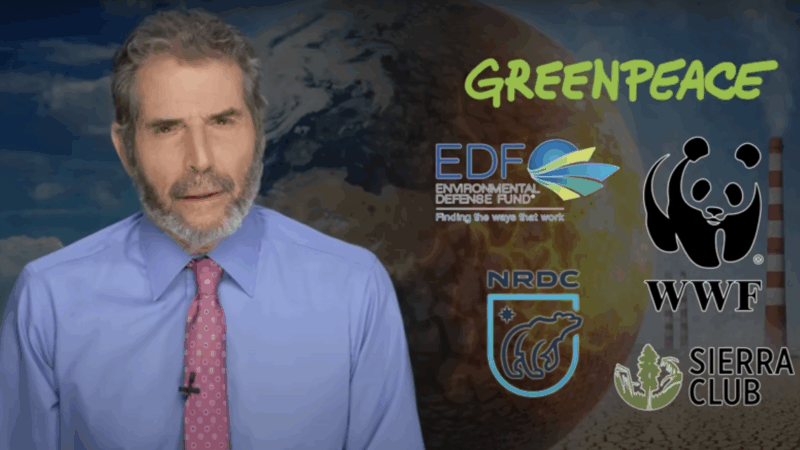How Environmental Groups Use Hysteria To Get Rich—and Stop Progress
Most of Big E spends little on cleaning rivers or parks and far more on filing lawsuits.

Environmental groups are now rich.
In 2020 (the most recent data available), they collected $8 billion in donations.
$8 billion!
"The environmental industrial complex actually has more money in the PR game, the lobbying game, than the real industry," says physicist Mark Mills in my new video. "Insufficient attention is paid to following the money."
He's right.
Go to their websites.
"DONATE" appears first. Sometimes it explodes onto your screen.
You'd think they were poor and desperate.
But they're rich.
They get richer by peddling deceit.
"Polar bears face extinction and bees are dying off!"
It's not true.
Polar bear and bee populations are increasing.
"These scares drive donations," says science writer Jon Entine. "They feel that the only way they can talk about environmental issues is to frame it with hysteria, crisis."
"But they're not trying to trick people," I push back. "They believe it."
"Sometimes they believe it," he says, "but they also recognize that hysteria generates donations. The oxygen for these organizations is money donated by people who think they're doing good."
So, you give them billions.
You think your money goes to "doing good," like cleaning up rivers or parks? Most of Big E spends very little on that.
Your donations to the World Wildlife Fund pay for its 250,000-square-foot headquarters with its "stunning eight-story, sky-lit atrium."
The Natural Resources Defense Council holds galas with fashion brands and celebrities. They get Leonardo DiCaprio and Robert Redford to make commercials for them.
But what bothers me most is the damage they do.
The Natural Resources Defense Council (NRDC) and Sierra Club spend your donations on lawyers. The NRDC filed a new lawsuit every 10 days.
The Center for Biological Diversity has more than 70 active lawsuits, while their executive director brags, "We do more environmental litigation than any other environmental group in the country."
"They have billions of dollars to not build a thing, but just to oppose building things," complains Mills.
"There's a rich sense of irony there," says the director of energy and environmental policy studies at the Cato Institute, Travis Fisher.
"Irony because while they say they'll save the bees, ultimately, that donation goes to a lawyer suing someone, preventing you from using gasoline."
The Sierra Club brags: "Our legal team has stopped thousands of miles of fossil fuel pipelines and dozens of large power plants."
But pipelines are better for the earth than shipping oil by truck.
America needs power plants to power our future, including nuclear plants. But last year, Friends of the Earth sued to shut down Diablo Canyon, California's last nuclear plant.
The NRDC, Sierra Club, and Defenders of Wildlife even sue to stop solar and wind farms. They claim, for example, that California's Calico solar project would destroy the habitat of desert tortoises.
Once upon a time, the big threat to development was NIMBY: Not In My Back Yard.
Today, it's BANANA: Build Absolutely Nothing, Anywhere, Near Anyone.
"What that means is we don't get the lifestyle that we want," says Fisher. "If you wanted to build a new house, what kind of permits do you have to get? Who do you have to talk to? Is the Sierra Club going to sue?"
I'm ashamed that I once fell for their scams. WCBS TV even ran ads promoting my environmental reporting with a headline that said, "If you wore a gas mask…you might be better off."
Now I realize that the big environmental groups fed me lies.
Today they mostly stop progress and make lawyers richer.
I invited the big groups to bring a spokesman to my studio and tell me why I'm wrong. None would agree.
"It's a shame, says Fisher, "When I think about what America could be, what we could be building, we could be so prosperous, so much more prosperous than we are."
COPYRIGHT 2025 BY JFS PRODUCTIONS INC.


Show Comments (18)